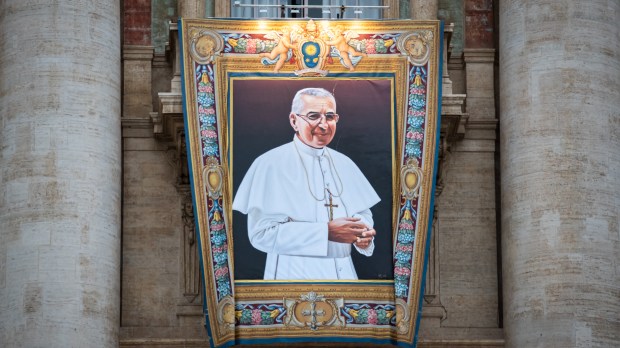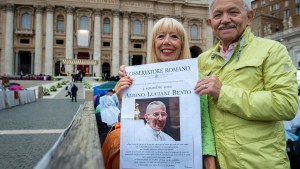Blessed John Paul I, who died 33 days after being elected pope on August 26, 1978, was known to be a voracious reader with a personal collection of books and texts amounting to around 5,000 volumes. Not only was reading a significant part of his life, but he also wrote 40 “letters” to characters of all types, including Pinocchio, St. Therese of Lisieux, and Mark Twain. These charming reflections were published in a book titled “Illustrissimi” (To the Illustrious Ones), released shortly before his death.
As a new critical edition of this text comes out on November 24, 2023, the John Paul I Vatican Foundation held a conference at the Pontifical Gregorian University in Rome on the same day to explain what we can learn about this Pope through his library.
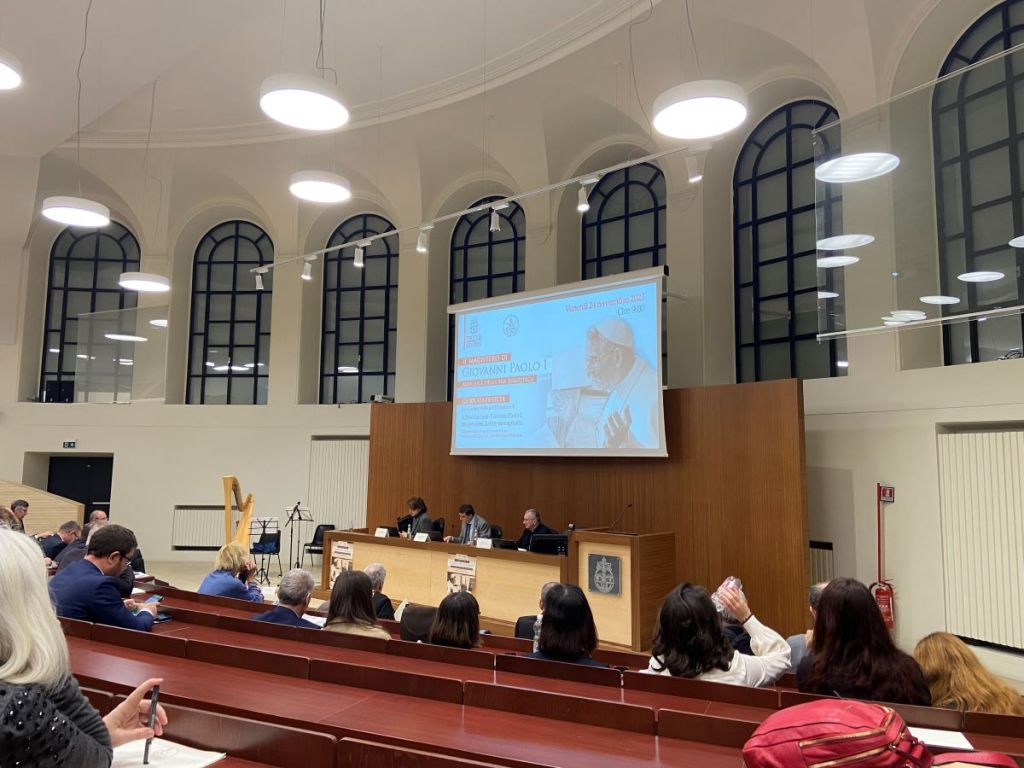
The Foundation has worked to disseminate “the message and exemplarity of Blessed Albino Luciani, a master […] of speaking to all, so that the message of salvation may be comprehensible to everyone,” said Cardinal Pietro Parolin, the Vatican’s Secretary of State and president of the Foundation, during the conference.
John Paul I, “whose importance is inversely proportional to the length of his short pontificate,” is relevant today and can “bring light to the problematic situations we are living through,” he commented.
In order to keep spreading John Paul I’s thought and work through programs, courses, workshops and more, the Foundation also signed an agreement with the Gregorian University during the conference.
What remains of Albino Luciani’s vast library
In Venice, near the waters of the Grand Canal, sits the Diocesan Benedict XVI library, where around 1,000 books, of the original 5,000 belonging to Pope John Paul I, are today held. The participants of the conference in Rome were momentarily transported to the famous city, as a video showed the boats and gondolas on the water alternated with images of the yellowing books and letters that belonged to the Pontiff.
“Blessed Luciani’s library is the guardian, it is the witness of the sanctity of this Pope,” said Professor Ottavio Bucarelli, director of the university’s department for Church cultural heritage. “Through what we know, what we have seen, what is catalogued, what is studied [in the library], it helps us to understand this Pope more, in 360 degrees.”
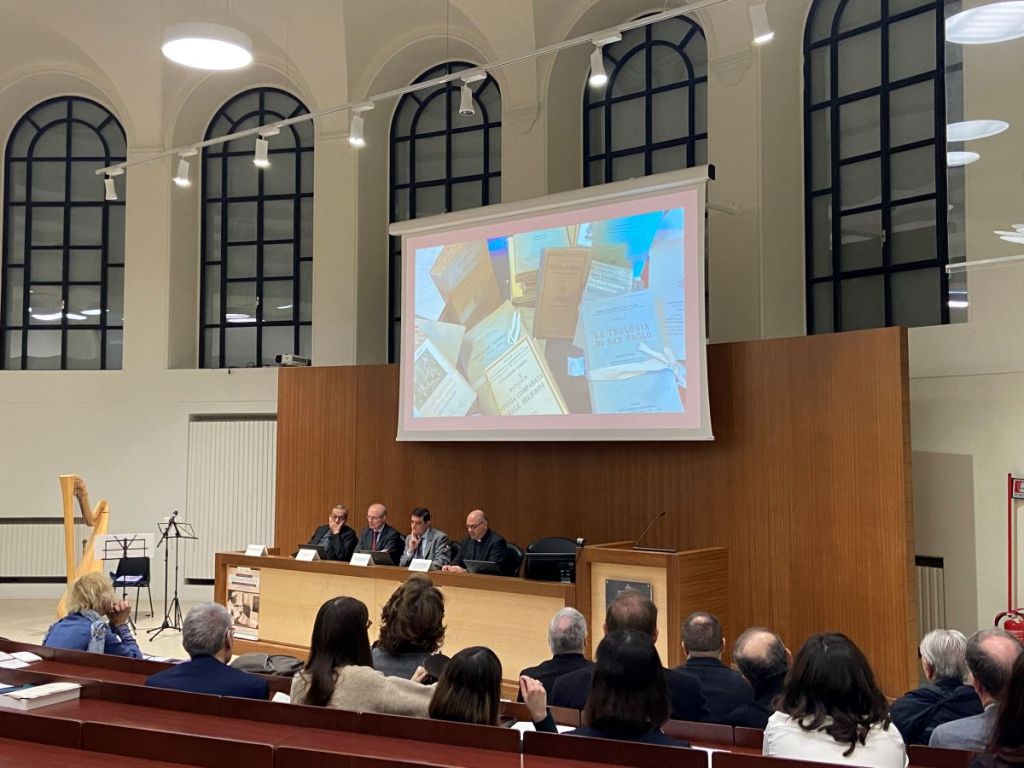
In fact, Professor Diego Sartorelli, of the Diocesan Benedict XVI Library, explained they had studied exactly how each book belonging to John Paul I had been used: for example, recording if the pages had been annotated and how, if letters or Vatican documents were found as bookmarks, or if he wrote his name and date on the inside, a habit which the researchers noticed he lost as he grew older.
Another speaker, Professor Mauro Velati, of the John Paul I Foundation, analyzed how the books the Pope owned reveal his theological and spiritual formation, such as the fact he liked the Jesuit spirituality particularly and that many of his texts were focused on catechesis and preaching.
The letters to the Illustrious Ones
“Illustrissimi” is considered “his human, spiritual, and pastoral testament,” said Cardinal Parolin, regarding this unique collection of letters. Written between 1971 and 1975 and published in a Catholic newspaper, the letters were then released in book form in 1976, two years before his election and death. In them he addresses all kinds of topics by writing to a “kaleidoscope of characters,” said Stefania Felasca, vice-president of the John Paul I Foundation, who span from Jesus to characters from Dante’s Divine Comedy.
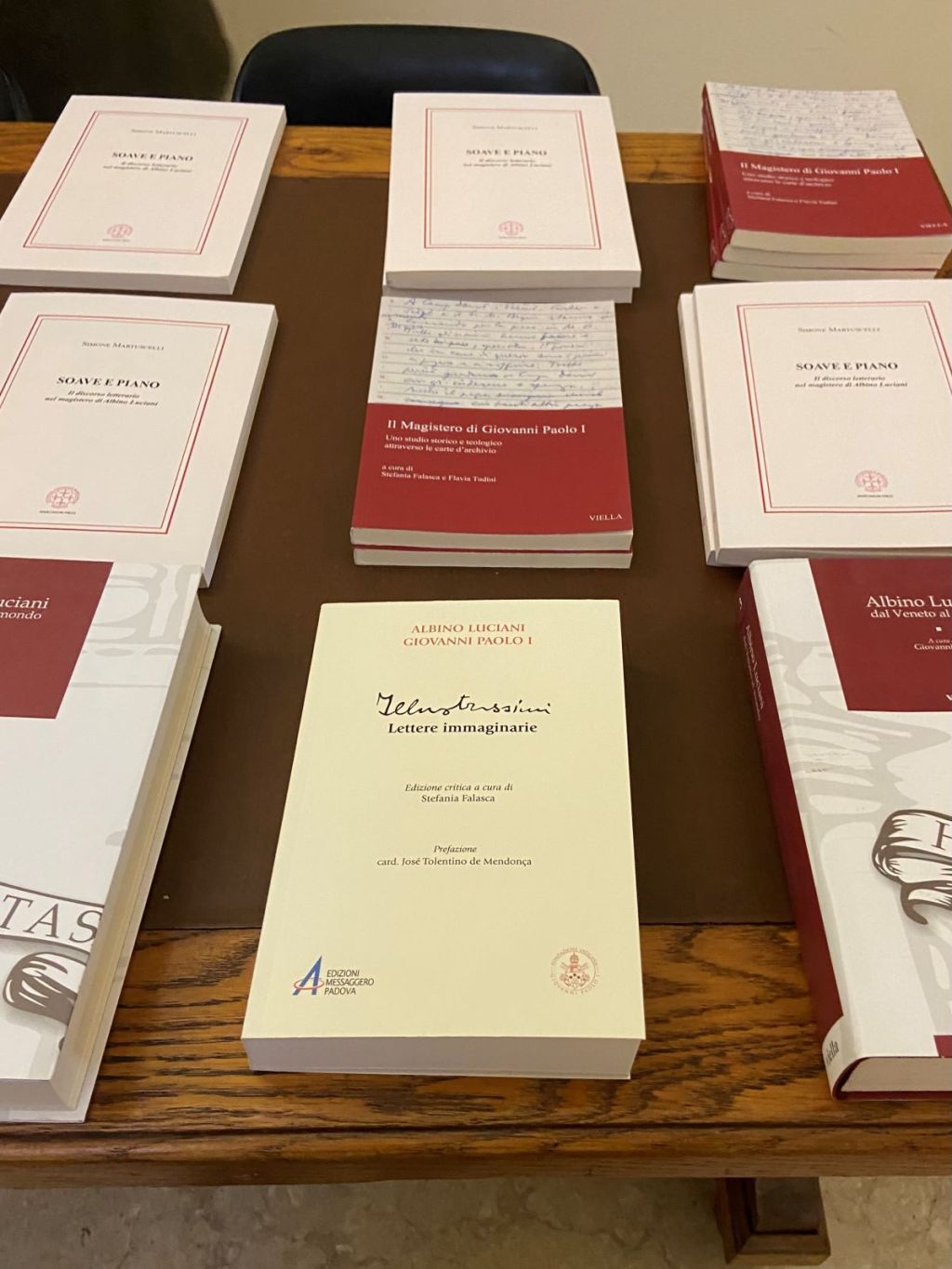
She explained that by writing to these different figures, John Paul I opted for the “sermo humulis” (humble discourse) in order to be able to speak clearly and accessibly to all who want to interact with the Church.
Two of the speakers also analyzed these letters from a literary and political point of view, showing how the Pope was able to confront hard subjects, from sentimental to social topics, through these often witty and creative letters.
Cardinal Parolin highlighted how John Paul I’s text can still have an impact today. “Let’s hope that this [new critical edition] doesn’t just stay in libraries, but passes through the hands of so many people, especially new generations and young people,” the Cardinal said. In this book people can find “great nourishment” as it is filled with “content for today’s life” in its “simple, accessible, and captivating” language.
John Paul I’s unique relic
The speaker Professor Ottavio Bucarelli also highlighted how John Paul I’s unique relic, which was exposed during his beatification on September 4, 2022, in St. Peter’s Square, shows the importance of this Pontiff’s texts. “We are used to bodily relics, but instead his was a manuscript, some notes, which were embedded” in a sculpture, Bucarelli explained.
In fact, his relic was a text he had written on the theological virtues, faith, hope and charity, surrounded by a wood and stone structure. This relic reveals “the meaning of his life, his thinking, his note-taking, his reflecting,” Professor Bucarelli said.
